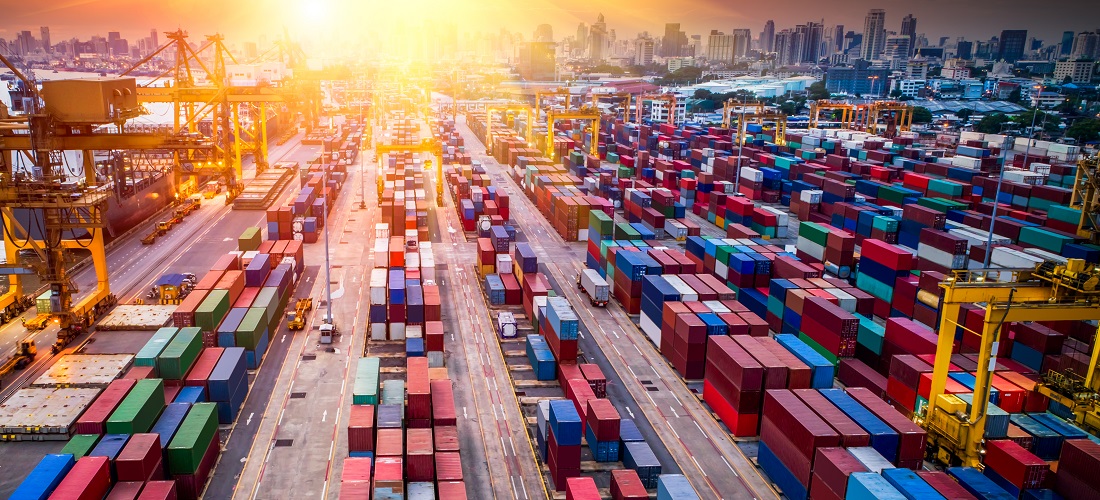
WTO forecasts rebound in global trade but warns of downside risks
Apr, 12, 2024 Posted by Gabriel MalheirosWeek 202416
In the latest “Global Trade Outlook and Statistics” report, WTO economists note that inflationary pressures are expected to abate this year, allowing real incomes to grow again — particularly in advanced economies — thus providing a boost to the consumption of manufactured goods. A recovery of demand for tradable goods in 2024 is already evident, with indices of new export orders pointing to improving conditions for trade at the start of the year.
WTO Director-General Ngozi Okonjo-Iweala said: “We are making progress towards global trade recovery, thanks to resilient supply chains and a solid multilateral trading framework — which are vital for improving livelihoods and welfare. It’s imperative that we mitigate risks like geopolitical strife and trade fragmentation to maintain economic growth and stability.”
High energy prices and inflation continued to weigh heavily on demand for manufactured goods, resulting in a 1.2% decline in world merchandise trade volume for 2023. The decline was larger in value terms, with merchandise exports down 5% to US$ 24.01 trillion. Trade developments on the services side were more upbeat, with commercial services exports up 9% to US$ 7.54 trillion, partly offsetting the decline in goods trade.
Import volumes were down in most regions but especially in Europe, where they fell sharply. The main exceptions were large fuel-exporting economies, whose imports were sustained by strong export revenues as energy prices remained high by historical standards. World trade remained well above its pre-pandemic level throughout 2023. By the fourth quarter it was nearly unchanged compared to the same period in the 2022 (+0.1%) and had only risen slightly compared to the same period in 2021 (+0.5%).
The report further estimates global GDP growth at market exchange rates will remain mostly stable over the next two years at 2.6% in 2024 and 2.7% in 2025, after slowing to 2.7% in 2023 from 3.1% in 2022. The contrast between the steady growth of real GDP and the slowdown in real merchandise trade volume is linked to inflationary pressures, which had a downward effect on consumption of trade-intensive goods, particularly in Europe and North America.
Downside risks
Moving forward, the report warns that geopolitical tensions and policy uncertainty could limit the extent of the trade rebound. Food and energy prices could again be subject to price spikes linked to geopolitical events. The report’s special analytical section on the Red Sea crisis notes that while the economic impact of the Suez Canal disruptions stemming from the Middle East conflict has so far been relatively limited, some sectors, such as automotive products, fertilisers and retail, have already been affected by delays and freight costs hikes.
The report furthermore presents new data indicating that geopolitical tensions have affected trade patterns marginally but have not triggered a sustained trend toward de-globalization. Bilateral trade between the United States and China, which reached a record high in 2022, grew 30% less in 2023 than did their trade with the rest of the world. Moreover, for the whole of 2023, global trade in non-fuel intermediate goods — which provides a useful gauge of the status of global value chains — was down 6%.
Signs of fragmentation may also be emerging in services trade: US imports of information, computer, and telecommunications (ICT) services from North American trading partners (mostly Canada) increased from 15.7% of total ICT imports in 2018 to 23.0% in 2023 while US imports of the same from Asian trading partners (mostly India) fell from 45.1% to 32.6%. Fragmentation of data flow policies along geopolitical lines, moreover, could cause global trade of goods and services in real terms to fall by 1.8% and global GDP to decline by 1% according to estimates from a forthcoming study by the Organisation for Economic Co-operation and Development and the WTO.
WTO Chief Economist Ralph Ossa said: “Some governments have become more sceptical about the benefits of trade and have taken steps aimed at re-shoring production and shifting trade towards friendly nations. The resilience of trade is also being tested by disruptions on two of the world’s main shipping routes: the Panama Canal, which is affected by freshwater shortages, and the diversion of traffic away from the Red Sea. Under these conditions of sustained disruptions, geopolitical tensions, and policy uncertainty, risks to the trade outlook are tilted to the downside.”
Regional trade outlook
If current projections hold, Africa’s exports will grow faster than those of any other region in 2024, up 5.3%; this however is from a low base, since the continent’s exports remained depressed after the COVID-19 pandemic. The CIS(1) region’s expected growth is just slightly below 5.3%, also from a reduced base after the region’s exports plunged following the war in Ukraine. North America (3.6%), the Middle East (3.5%) and Asia (3.4%) should all see moderate export growth, while South America is expected to grow more slowly, at 2.6%. European exports are once again expected to lag behind those of other regions, with growth of just 1.7%.
-
Other Cargo
Jun, 21, 2023
0
Argentina’s growing lithium industry hits record exports
-
Ports and Terminals
May, 05, 2023
0
Hamburg Sud begins exporting through Mar Del Plata
-
Meat
Dec, 22, 2022
0
Pork: Brazilian exports reach 55.047 k tonnes in December
-
Oil and Gas
Mar, 22, 2022
0
Oil exports from Brazil increase until the 3rd week of March; sugar drops

